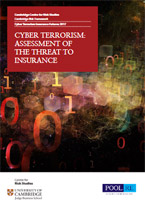 Cambridge Centre for Risk Studies
Cambridge Centre for Risk Studies
Sinopse: Terrorism – the application of politically-motivated violence to resist or influence the policies of governing regimes – has been a spectre of organised governments for millennia.1 Almost by definition, terrorism is ‘asymmetrical’: the state is always more powerful than the antagonists seeking to undermine it. In employing a technique of changing violent tactics, a less well-resourced terror group can use the element of surprise to achieve success against a less agile state security apparatus.Terror tactics have changed over time as the genus of groups perpetrating the violence and the security measures in place to prevent them has advanced and evolved. As known targets are hardened and securitised, terrorist groups typically shift to softer, more vulnerable targets. This praxis is shown in the changing terrorist practices of the last hundred years, from political assassination in the early 20th century, to plane hijacking and hostage taking by Middle Eastern terrorist groups in 1970s, attacks on police and army units and mainland car bombs preceded by warnings by the IRA in 1990s, and a shift toward maximising civilian casualties with suicide attacks by jihadists in the past 15 years. Perhaps the most radical innovation in terror tactics in the 21st century to date has been the weaponisation of passenger aircraft by al-Qaeda in 2001.
